Add fertilizer for broccoli and spring cabbage plant (Broccoli and spring cabbage production guide)
How to grow broccoli and spring cabbage in mulching cultivation. The focus for today is managing the growth of our broccoli plant and spring cabbage.
Last time, we explained how to prepare broccoli and spring cabbage for winter. It is still a cold season, but this time we will fertilize the broccoli and spring cabbage. (In winter, it takes about a month for the fertilizer to work, so we add fertilizer in January.)
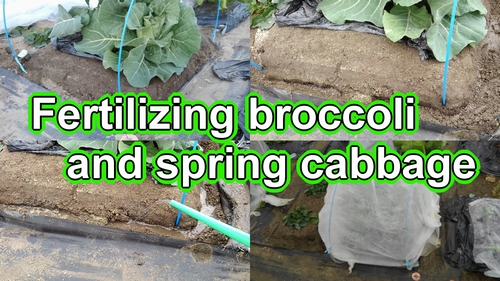
The broccoli and spring cabbage, planted in early November, are now overwintering. They are kept warm with nonwoven fabric, but we haven’t fertilized them yet. This is their first fertilization.
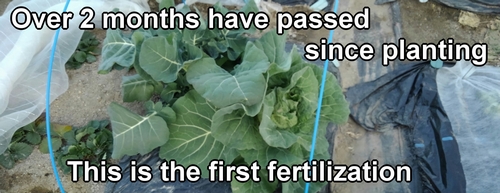
We decide whether to insulate the broccoli and spring cabbage based on the highest temperature. If the number of days with a high temperature below 10°C (50°F) increases, cover the bed with nonwoven fabric to keep them warm.
When we lift the mulch, we see roots growing to the edge of the bed. So, we will add fertilizer around there.
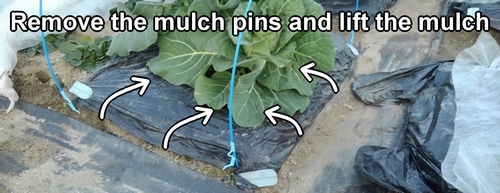
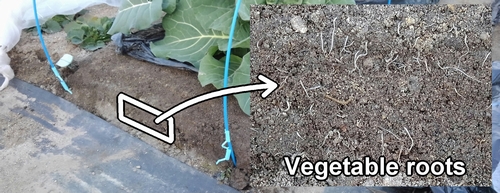
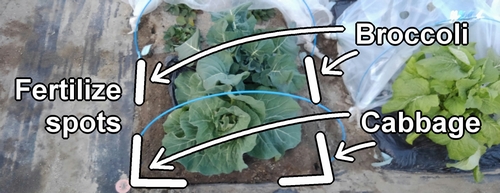
We use organic chicken manure for fertilizing broccoli and spring cabbage. (fully matured fermentation) The amount of add-fertilizing is 20g (0.7 oz) of chicken manure per spot. The quantity of chicken manure is measured using a measuring cup or similar tool.
Organic chicken manure is a recommended fertilizer for broccoli and spring cabbage additional fertilizing because it contains a balanced amount of nutrients necessary for broccoli and spring cabbage cultivation.
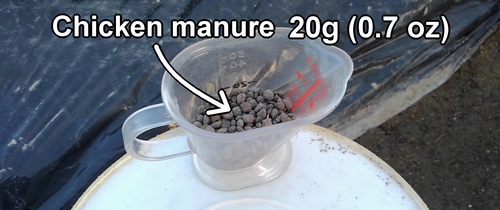
The method for add-fertilizing involves lifting the mulch, digging a hole of about 10cm (4 inches) deep, and placing the fertilizer in it. (When digging holes, please use a trowel.)
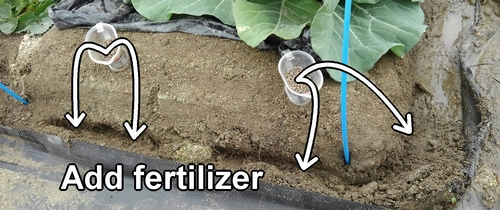
Apply fertilizer in two spots for the broccoli and two spots for the spring cabbage, so a total of four spots. The key point about fertilizing is not to use too much. Over-fertilizing can cause pest problems and poor growth. Use the right amount.
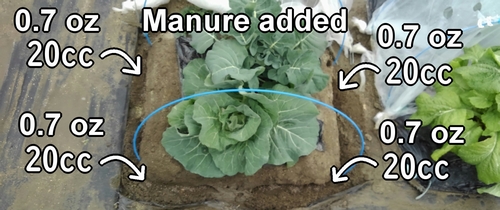
After additional-fertilizing, water the chicken manure and cover it with soil. We water the fertilizer, chicken manure, to help the soil microorganisms. (For microorganisms, moist fertilizer is easier to decompose.)
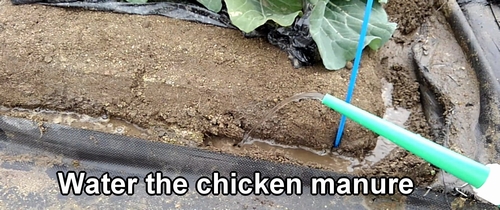
Don’t forget to cover the fertilizer with soil. If chicken manure is exposed on the soil, it can attract pests due to the smell. If you add fertilizer to the broccoli and spring cabbage but pests still come, it won’t help. After fertilizing, always cover the soil.
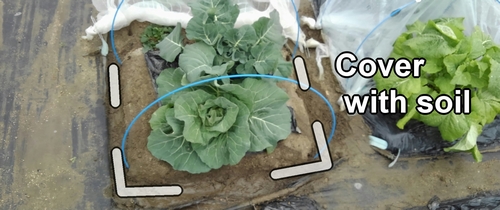
Finally, put back the black polythene mulch, the insect netting, and nonwoven fabric. Broccoli and spring cabbage add-fertilizing completed. (Management of broccoli and spring cabbage cultivation is now done.)
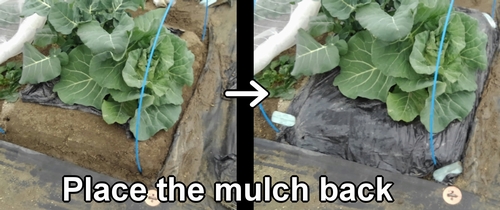
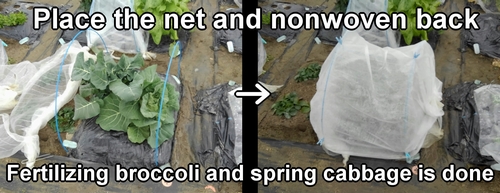
How to grow spring cabbage and broccoli. If you want to start with soil preparation, click here. (Making bed and fertilizing was around mid-October.)
Related information on spring cabbage cultivation(Frequently Asked Questions for growing spring cabbage)
Please tell me how to grow spring cabbage
The growing schedule for overwintering spring cabbage is to prepare the soil around late October and plant in early November. Since cabbage easily attracts insects, put up an insect net at planting time. Around December, when the temperature drops, use a non-woven fabric cover to keep the plants warm. The temperature guide for spring cabbage is 10°C (50℉). When the high temperature falls below 10°C (50℉), it’s time to cover for warmth.
After the new year, the first care for spring cabbage is side dressing. Around mid-January, apply chicken manure as a side dressing. January is still a cold time, but this side dressing will help the spring cabbage grow well in the spring. The harvest time for spring cabbage is from early to mid-March. You can tell it’s the right time to harvest if the cabbage feels firm when you press it from the top. If you wait too long to harvest spring cabbage, it may split, so be careful not to miss the right time.
Related information on broccoli cultivation
When is the planting time for broccoli?
The planting time for broccoli was early November. We use tunnel cultivation right after planting. Putting up an insect netting helps keep pests away.
How much space is needed between broccoli plants? (Planting space for broccoli)
I think the space between broccoli plants should be at least 30cm (1 foot). If you have enough room, 40-50cm (15.7-19.7 inches) between plants is also good. (If the space is too close, air won’t move well, and broccoli can get pests and diseases easily.)
Following is the video for how-to. English subtitles are available.













Discussion
New Comments
No comments yet. Be the first one!